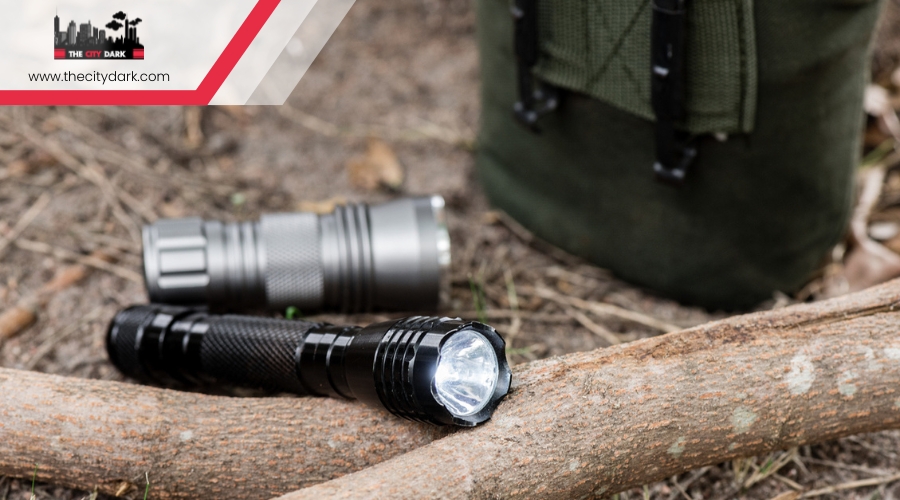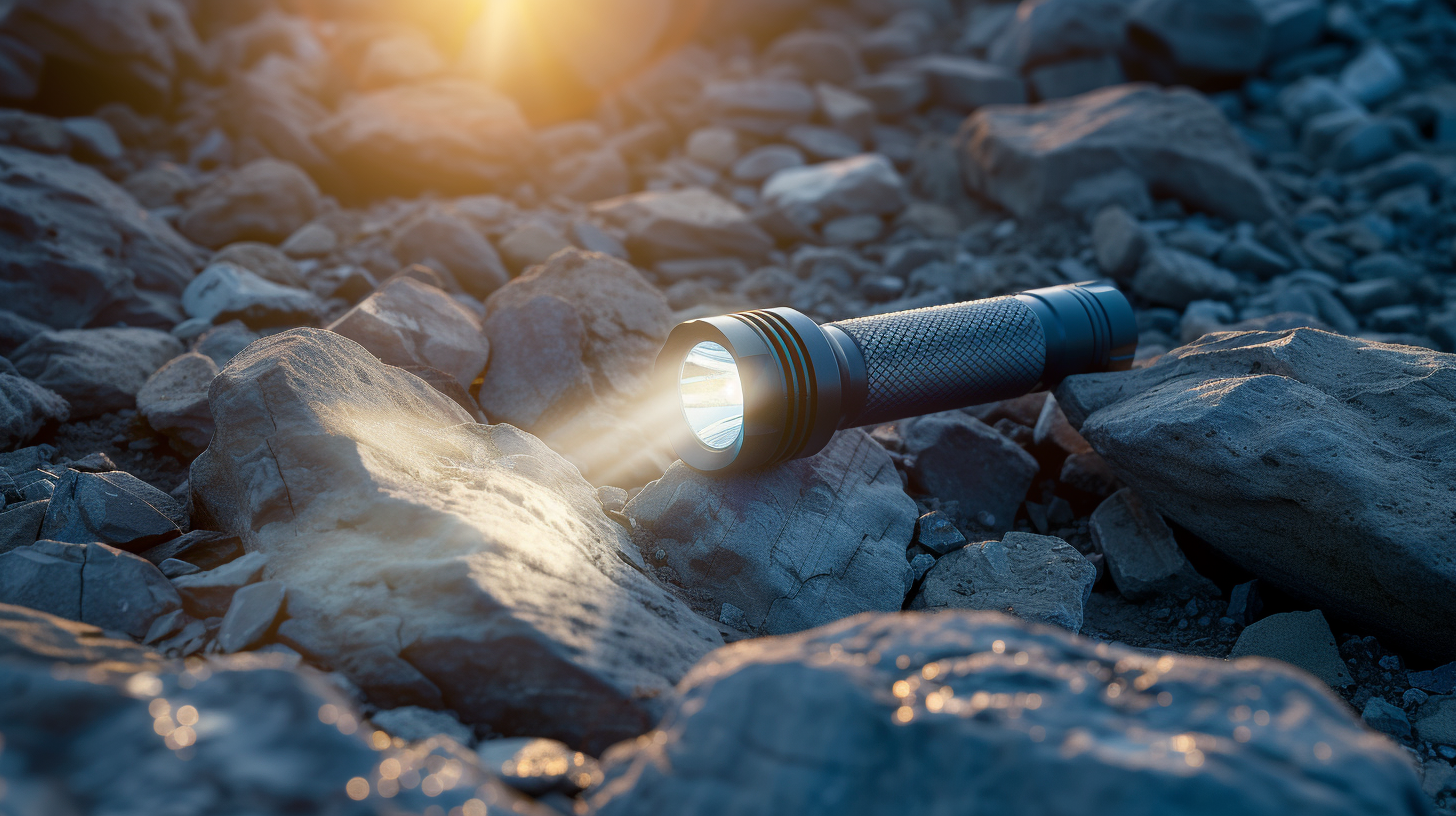What Is the Purpose of a Green Flashlight?
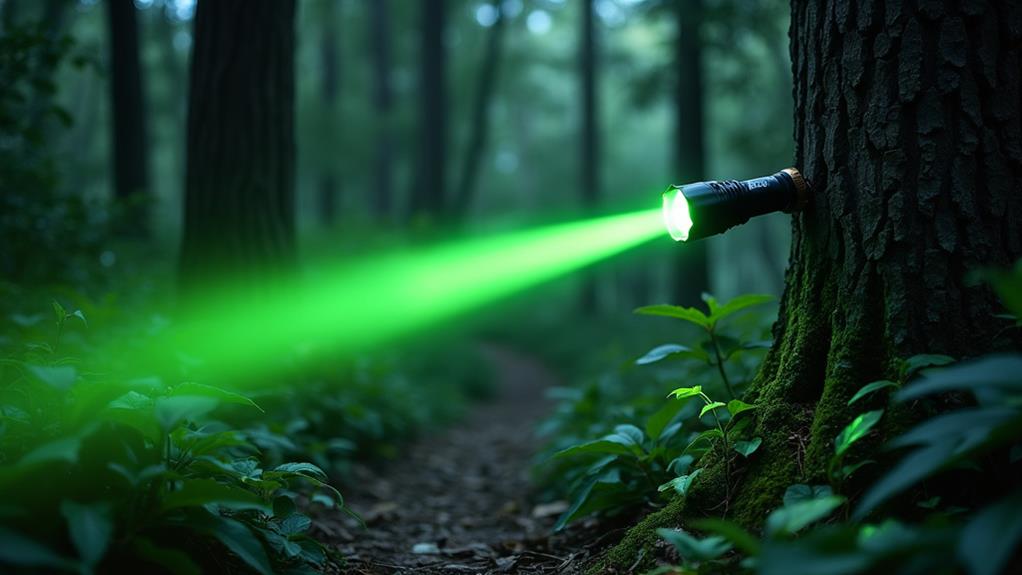
If you've ever wondered why some flashlights emit green light instead of the usual white, you're not alone. Green flashlights serve a specific purpose: preserving night vision and minimizing environmental disruption. Unlike white or blue light, green light allows for clear vision in the dark without straining the eyes. This makes green flashlights particularly useful for activities like hunting, wildlife observation, and tactical operations. Additionally, green light is less likely to spook animals, making it ideal for nocturnal activities. These advantages and practical applications make green flashlights a valuable tool in various settings.
Benefits of Green Flashlights

Green flashlights offer numerous advantages, particularly for outdoor nighttime activities. Preserving night vision is crucial in such settings, and green light helps maintain your eyes' adaptation to darkness, enhancing your ability to see without compromising your natural vision. This is especially useful for activities like hiking or camping, where navigating in low-light conditions is often necessary.
Green LEDs also provide sharp contrast and improved visibility, making it easier to spot wildlife and objects in dim environments. For hunters and outdoor enthusiasts, this can be a significant advantage. Green light is less likely to disturb nocturnal creatures, allowing for stealthy movement and reducing the risk of alarming your game.
Furthermore, green LEDs consume up to 30% less power compared to white light, resulting in longer battery life. This reduces the need for frequent battery replacements, adding convenience to your nighttime excursions.
Night Vision Preservation
When you're out in the wilderness at night, preserving your night vision is crucial. Green lights are particularly effective in these situations. Unlike white or blue lights, which can disrupt your eyes' adaptation to darkness, green flashlights are designed to minimize light absorption breakdown. This helps you maintain your night vision longer, essential for maneuvering in low-light conditions.
Human eyes are most sensitive to green wavelengths, typically between 520-555 nm. This sensitivity allows you to see more clearly without compromising your night vision. Dim green light also enhances your peripheral vision and boosts contrast, making it easier to differentiate colors and details. This is especially useful for spotting trails, obstacles, or other key features in the dark.
Another significant advantage of green lights is their ability to reduce eye strain. Brighter lights can cause considerable fatigue, especially during prolonged use. A green flashlight allows you to use it comfortably for extended periods, keeping you alert and focused. This is particularly beneficial for various nighttime activities. So, next time you plan a night adventure, make sure to bring a green flashlight!
Wildlife and Green Light
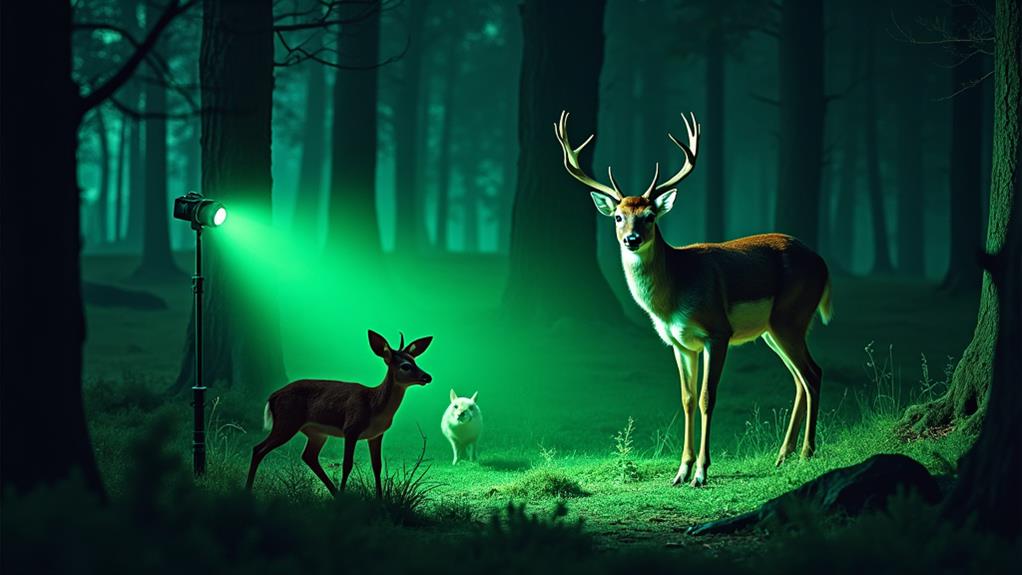
Using a green flashlight for wildlife observation minimally disturbs animals, allowing you to approach more closely without alarming them. The green wavelength is less noticeable to many mammals, making it effective for night hunting and spotting game. Additionally, green light doesn't attract insects or other wildlife, ensuring a more focused and enjoyable outdoor experience.
Attraction to Green Light
Outdoor enthusiasts often find that green light serves a unique purpose in preserving the natural behavior of wildlife. When hunting or fishing, maintaining night vision is essential. Green light is less disturbing to animals, allowing observation without causing alarm. Many animals, like deer and fish, are less sensitive to green wavelengths, making it easier to blend into their environment.
The wavelength of green light (525 nm) improves visibility while minimizing the risk of spooking wildlife. This makes green flashlights excellent for tracking. Additionally, green LEDs attract fewer insects than white light, creating a more pleasant and less distracting environment for outdoor activities.
Here's a comparison to better understand the benefits:
| Aspect | Green Light | White Light |
|---|---|---|
| Animal Disturbance | Minimal | High |
| Night Vision | Preserved | Compromised |
| Insect Attraction | Low | High |
| Battery Run Time | Longer | Shorter |
These advantages make green flashlights a valuable tool for anyone serious about outdoor adventures. Whether tracking game or fishing at night, using green light helps you stay stealthy and efficient.
Impact on Animal Behavior
Understanding the subtle impact of green light on animal behavior is crucial for outdoor activities. When in nature, minimizing disturbances to wildlife is essential. Green light is particularly effective in this regard, as it minimally affects the behavior of animals, insects, and fish. This allows you to move without alarming local wildlife, helping to keep them in their natural state.
For example, mammals have dichromatic vision, making them less sensitive to green light. This reduced sensitivity means you are less likely to spook wild game during nighttime activities. Using a green flashlight while hunting enables you to track animals without disrupting their behavior or surroundings, preserving the natural tranquility of the environment.
Additionally, green light enhances visibility while preserving night vision, which is particularly useful for maintaining situational awareness in low-light conditions. This ensures you can see clearly without compromising your ability to detect subtle movements and details.
Benefits for Night Hunting
Given the numerous advantages of green flashlights for night hunting, it's no wonder they're a popular choice among hunters. Green light preserves your night vision, allowing clear sight without compromising your ability to navigate in the dark. This is because green light minimally affects the rod cells in your eyes, which are crucial for night vision.
Wildlife such as deer and other game animals are less likely to be spooked by green light compared to white or red light, making it ideal for hunting. The visibility range of green LEDs can extend up to one mile, enabling you to spot distant game without alarming them.
Moreover, green light enhances contrast and detail recognition in low-light conditions, allowing you to track and identify animals effectively without disturbing their natural behavior. Green flashlights also consume less battery power compared to red and white lights, extending their operational time during nighttime hunting excursions.
Here are some benefits:
- Preserves night vision
- Less likely to spook wildlife
- Enhanced visibility up to one mile
- Improves detail recognition in low light
- Longer battery life
These benefits make green flashlights an indispensable tool for night hunting.
Tactical Uses of Green Light
In the field, a green flashlight enhances night vision while maintaining situational awareness. It aids in tracking wildlife without startling them, making it crucial for tactical operations. By preserving peripheral vision and reducing eye strain, a green light ensures alertness and efficiency.
Enhancing Night Vision
Using a green flashlight in tactical operations can significantly enhance your night vision. Human eyes are more sensitive to green wavelengths (520-555 nm), which allows for clearer vision in low-light conditions. This improves situational awareness by preserving peripheral vision, crucial for detecting movement without revealing your position.
Green LEDs also cause less eye strain compared to white light, making them ideal for extended nighttime activities such as navigation or hunting. Unlike red light, green light provides better contrast and clarity, aiding in the identification of objects and terrain.
Key benefits of green flashlights include:
- Enhanced night vision: Maintain clear vision without compromising natural night vision.
- Improved situational awareness: Detect movements without alerting others.
- Reduced eye strain: Remain comfortable during prolonged use.
- Increased contrast and clarity: Easily identify objects and terrain.
- Effective in outdoor environments: Track game without disturbing wildlife.
Wildlife Preservation Tactics
Green flashlights offer significant advantages for wildlife preservation by enhancing night vision and minimizing disturbance to animals. The green light wavelength (525 nm) is less detectable to many mammals, allowing for unobtrusive observation and tracking of nocturnal animals. This is particularly beneficial for hunters and wildlife enthusiasts, as it helps maintain stealth during nighttime activities.
In addition to aiding in wildlife observation, green flashlights help preserve night vision. They provide clearer visibility in low-light conditions without causing the harsh glare and eye strain associated with white light. This improves situational awareness by enhancing peripheral vision and helping to identify potential obstacles or dangers in the dark.
Furthermore, green light offers better contrast and visibility when tracking or spotting game animals. It allows for close observation without startling wildlife, supporting ethical hunting practices and effective wildlife preservation. By reducing animal disturbance, green flashlights promote a harmonious interaction with nature, enabling responsible enjoyment of the environment.
Energy Efficiency

Harnessing the power of green LEDs, green flashlights are notable for their exceptional energy efficiency. They consume approximately 10% less electricity than red lights and 30% less than white lights, offering significant energy savings. This efficiency means you can rely on your green flashlight for extended periods without frequent battery replacements, further minimizing energy consumption.
Green LEDs also have a lifespan exceeding 25,000 hours. This impressive durability reduces waste and the energy used in manufacturing and disposing of traditional incandescent bulbs, benefiting both you and the environment. Lower power consumption in green flashlights translates to decreased reliance on fossil fuels, promoting a more sustainable energy footprint.
By integrating energy-efficient green LED technology into various applications, you contribute to reducing carbon emissions and greenhouse gases. Benefits include:
- Lower electricity consumption, reducing your energy bills.
- Extended run times, minimizing interruptions in your activities.
- Less frequent battery replacements, saving you time and money.
- Reduced environmental impact from less waste.
- Support for a greener, more sustainable future.
Choose green flashlights to positively impact your energy use and the environment.
Comparing Red and Green Light
When comparing red and green light, green light is generally better for preserving night vision while offering clearer visibility without startling wildlife. Red light is useful for navigation but can distort colors and make it harder to see in low-light conditions. In contrast, green light enhances detail recognition and provides better contrast, making it ideal for various outdoor tasks.
Night Vision Preservation
Effective night vision preservation hinges on the choice between red and green light. When you rely on your night vision, green light offers significant advantages. Your eyes' rod cells are most sensitive to wavelengths around 520-555 nm, which falls within the green light spectrum. This sensitivity allows you to see more clearly in low-light conditions without compromising your night vision.
Unlike red light, green light maintains color accuracy and contrast, aiding in the differentiation of hues. This is crucial for nighttime activities where color recognition is essential. The reduced eye strain from dim green light also means you can use it for longer periods without disrupting your night vision adaptation.
Studies show that green light improves peripheral vision, essential for situational awareness in the dark. This ensures you remain aware of your surroundings while preserving your night vision.
Consider the benefits of green light for your night vision:
- Better low-light visibility
- Improved color accuracy and contrast
- Reduced eye strain for extended use
- Enhanced peripheral vision
- Maintained situational awareness
Choosing green light can make all the difference in preserving your night vision and optimizing your nighttime activities.
Wildlife Visibility Impact
Choosing the right light for nighttime activities can significantly impact wildlife visibility. When you're out hunting or observing animals, green light is ideal. Unlike red light, which can impair color and detail perception, green light enhances visibility and contrast, allowing you to spot game more easily in low-light conditions.
Many mammals, including the wildlife you're interested in, typically have dichromatic vision and struggle to see green light. This means you can use it without disturbing them, preserving your night vision and keeping you undetected. This dual benefit is invaluable when tracking or observing animals at night.
Additionally, green flashlights attract fewer insects compared to white or blue lights, enhancing your camping or fishing experience. Green LEDs also have a visibility range of up to one mile, making them particularly effective for spotting dark-colored animals, such as wild hogs, from a distance without spooking them. For better wildlife visibility and a more enjoyable outdoor experience, green light is the optimal choice.
Tactical Usage Benefits
Green LED flashlights offer significant advantages in various tactical scenarios due to the human eye's heightened sensitivity to green wavelengths (520-555 nm). These flashlights enhance situational awareness in low-light conditions by improving peripheral vision, crucial during tactical operations. Unlike red light, green light facilitates better detail recognition, which is invaluable when navigating tricky terrains or identifying targets.
In nighttime hunting, green light proves highly effective. It minimally disturbs wildlife compared to red light, allowing closer approaches to game animals without alarming them, thereby increasing the chances of a successful hunt. Additionally, green light extends visibility distances, making it easier to spot dark-colored animals in shadows.
For stealth operations, green light minimizes detection risk while providing adequate illumination for essential tasks. Reasons to prefer green LED flashlights include:
- Enhanced Peripheral Vision: Improve situational awareness with less effort.
- Superior Detail Recognition: Clearly identify targets and obstacles.
- Minimal Wildlife Disturbance: Approach game animals more closely.
- Extended Visibility Distances: Detect animals from farther away.
- Reduced Detection Risk: Maintain a low profile while remaining effective.
Switching to green light can significantly enhance your tactical and hunting activities.
Types of Green Flashlights
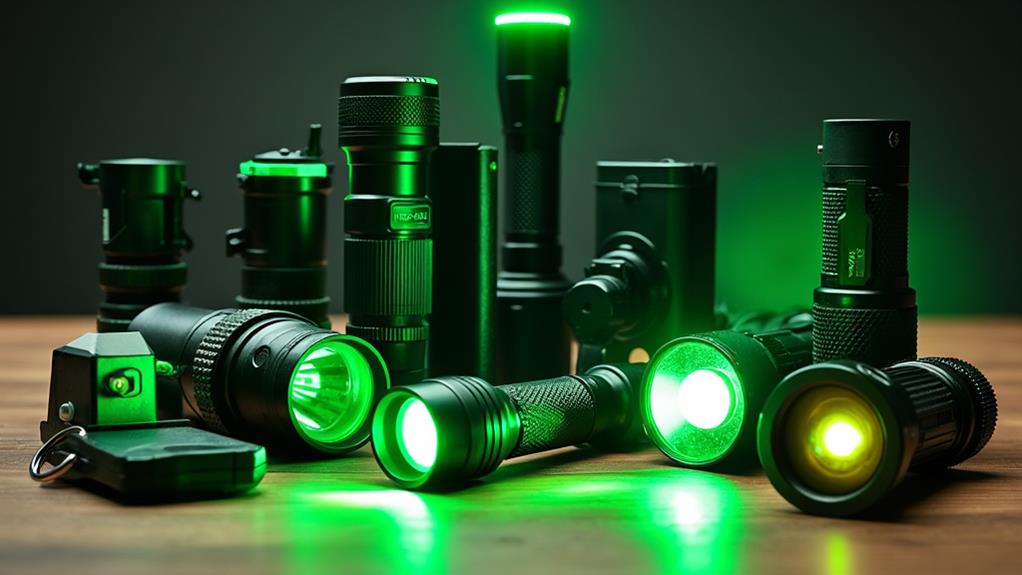
When it comes to green flashlights, there are several types designed to meet specific needs and activities. For hunters, green lights are ideal for minimizing wildlife disturbance. Standard handheld flashlights are versatile, providing sufficient illumination for navigation without alarming animals.
For hands-free, targeted illumination, rail-mounted gun lights are a specialized option. These attach directly to firearms, allowing you to aim without juggling a separate flashlight, enhancing both efficiency and safety during hunting.
Hybrid flashlights offer flexibility, functioning as either handheld units or mounted lights. This adaptability makes them suitable for various activities, from camping to tactical operations, where green light proves incredibly useful.
Headlamps are excellent for hands-free use, facilitating movement and multitasking in low-light conditions. They keep your hands free while maintaining visibility, all without disturbing nearby wildlife.
Lastly, spotlights deliver a powerful beam but can potentially spook animals, making them less suitable for stealthy hunting scenarios. Choose the type that best fits your activity and enjoy the unique advantages of green illumination.
Practical Applications
Green flashlights offer a range of practical applications, making them indispensable for outdoor and tactical activities. For hunters, green light is particularly beneficial as it doesn't scare away wildlife, allowing for stealthy tracking and observation, which is crucial for getting close to your target without startling it.
Additionally, green flashlights help preserve night vision. Unlike white light, green light has minimal impact on your eyes' adaptation to darkness, reducing eye strain and enabling clearer vision in low-light conditions. This is especially useful for spotting dark-colored animals and enhancing detail recognition.
Green LEDs also boast a visibility range of up to one mile, making them ideal for professional rescue operations and general consumer use. In tactical settings, they provide better situational awareness without compromising stealth during nighttime operations.
Consider these benefits:
- Stealthy tracking: Approach wildlife without spooking them.
- Night vision preservation: Maintain clear vision without eye strain.
- Improved visibility: Effectively spot details and dark-colored animals.
- Rescue operations: Utilize high visibility range to locate people in the dark.
- Tactical advantage: Enhance situational awareness while remaining stealthy.
These advantages make green flashlights a valuable tool for various scenarios.
Technological Advancements
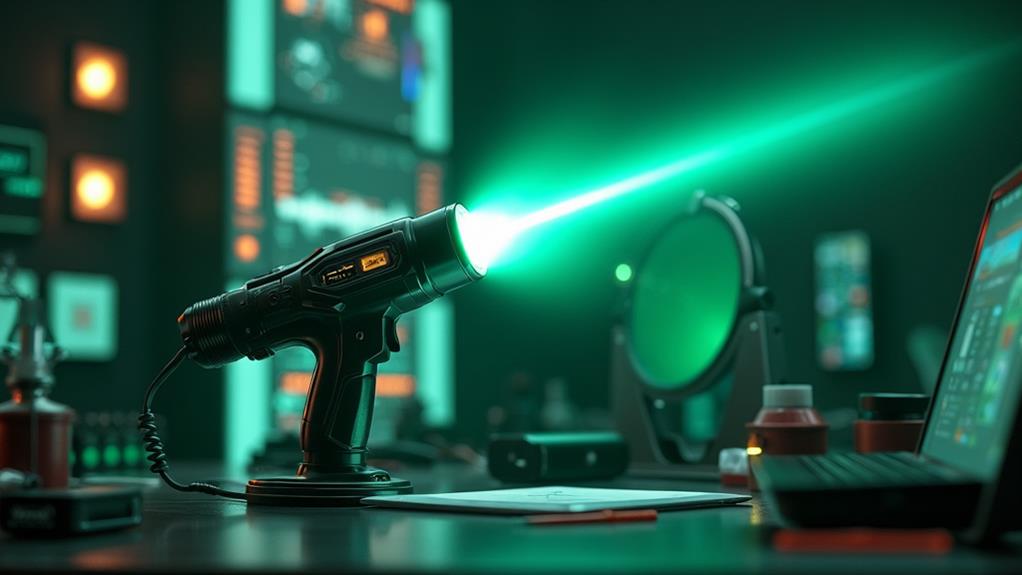
Recent technological advancements have significantly enhanced the performance and efficiency of green flashlights. Modern green LEDs, emitting light in the 520-570 nm range, are now brighter and more effective in low-light conditions due to advanced semiconductor materials like gallium phosphide and gallium nitride.
A notable benefit is the energy efficiency of green LEDs, which consume less power, extending battery life by up to 30% compared to white LEDs. This improvement is particularly beneficial for extended use, whether camping or working in dim environments.
Technological advancements have also optimized the packaging and design of green LEDs, enhancing thermal management. This not only boosts the flashlight's efficiency but also increases safety by preventing overheating during prolonged use.
Additionally, the integration of smart technology allows for the automated control of green LED flashlights, enhancing their functionality and convenience for both consumer and industrial applications. These advancements make green flashlights more reliable and efficient than ever.
Market Trends and Environmental Impact
As technological advancements enhance the efficiency and reliability of green LEDs, it's essential to evaluate their influence on market trends and environmental impact. The rising demand for green LEDs across various industries underscores their energy efficiency and versatility. In the automotive sector, green LEDs improve visibility for both interior and exterior lighting applications, enhancing their popularity. Additionally, smart home devices increasingly integrate green LEDs, contributing to the IoT market with their energy-saving capabilities.
The horticultural industry significantly benefits from green LEDs, which support plant growth while minimizing energy consumption. This not only promotes sustainable indoor farming but also reduces the carbon footprint associated with traditional farming methods. Moreover, green LED technology is mercury-free, making it safer for disposal and decreasing environmental hazards compared to conventional lighting options like CFLs.
The anticipated growth in the global LED market highlights the critical role of green LEDs in reducing greenhouse gas emissions. By significantly lowering energy consumption and dependence on fossil fuels, green LEDs contribute substantially to environmental sustainability.
- Improve visibility and safety in vehicles
- Enhance energy efficiency in smart homes
- Support sustainable indoor farming
- ⚠️ Reduce environmental hazards during disposal
- Lower greenhouse gas emissions
Adopting green LED technology is a step towards a more sustainable future.


